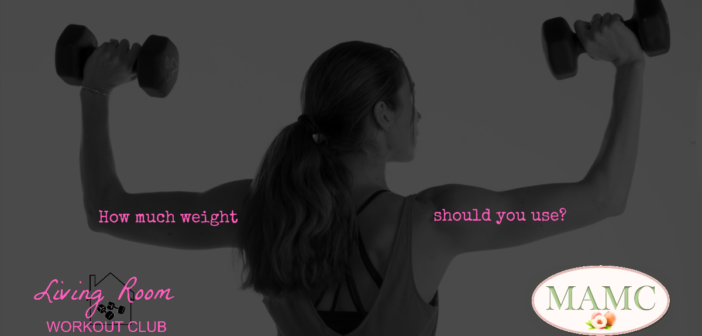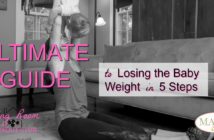Are you interested in starting a strength training regime by lifting weights? If not, you should be!
Strength training is the name of the game when it comes to being efficient with your time (and what mom couldn’t use more time?). Remember adding lean muscle help burn more calories throughout the day. Check out my last blog post here for many more reasons to incorporate strength training. And yes, in case you are wondering…. You can do it all in your living room!
Ok, so now that you are convinced. It’s time to talk about how much weight to use when lifting weights. The answer to this question depends on two things:
- What are your goals?
- What is your current fitness level?
For beginners and to build stability and endurance in your muscles often body weight is enough. To add difficulty to your exercises, challenge your balance (eq. stand on one foot). For moves that require added resistance choose a weight that will allow you to perform 12-20 reps before failure. If you can easily do 20 reps with what you are using now, consider increasing. Additionally, in this phases of training you should be performing your reps SLOWLY. 1 count against the direction of resistance, hold for 2 counts, then 4 counts in the direction of resistance. For example, in a shoulder press, you would press up for 1 count, hold for 2 counts, and slowly lower for 4 counts (not allowing gravity to do any of the work).
To build strength and add lean muscle choose a weight that will allow you to perform 8-12 reps before failure. If adding lean muscle is your goal and you can easily do 12 reps with what you are using now, consider increasing your weight. This phase of training can be done a little faster. Ideally each move would be complete using a 2-0-2 count: 2 count against the direction of resistance, no hold, 2 count in the direction of resistance. For example, in the same shoulder press exercise, you would press up for 2 count and lower for 2 counts (still not allowing gravity to do any of the work).
Check your progress regularly and increase your weight to meet YOUR goals.
The next steps is deciding what exercises to do and put them together to form a workouts. When designing my workouts I always use this Plug and Play template as a guide. Using movement patterns to design your workout is the most efficient way to make sure you are training your whole body the right way. If a pattern is missing in a workout, you are failing to train your entire body. If a pattern is consistently missing from your workouts, you are setting yourself up for muscle imbalances and inevitably injury.
To get the most out of every workout, protect your lower back from injury, improve your “mom posture,” and sneak in a core workout always engage your core!




